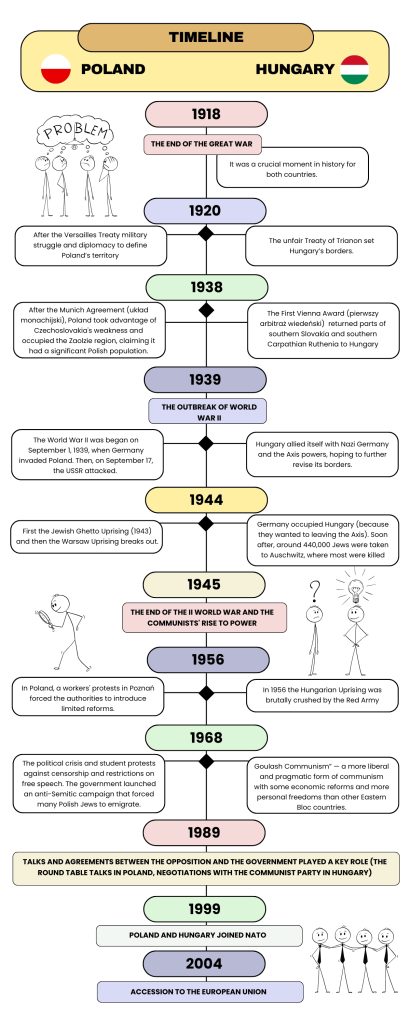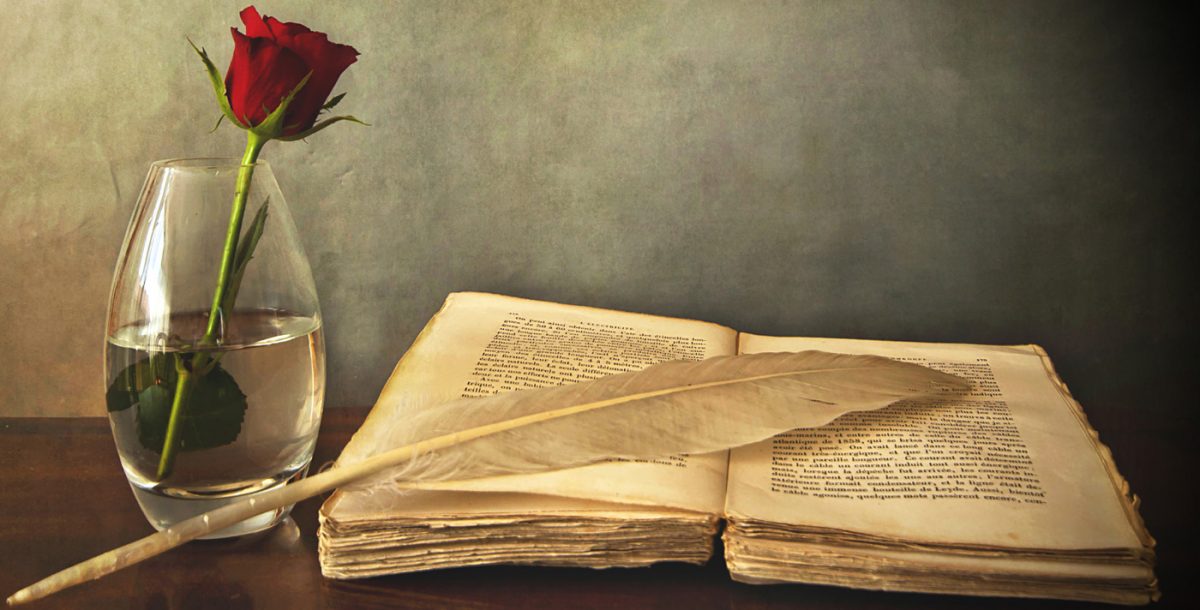An extended-level (matura-level) history lesson in a bilingual class/ review lesson.

The proverbial saying about the traditional brotherhood and camaraderie between Poles and Hungarians.
The saying’s Polish text reads
Polak, Węgier — dwa bratanki,
i do szabli, i do szklanki,
oba zuchy, oba żwawi,
niech im Pan Bóg błogosławi.
The full, two-couplet Hungarian version reads
Lengyel, magyar – két jó barát,
Együtt harcol s issza borát,
Vitéz s bátor mindkettője,
Áldás szálljon mindkettőre.
Translation:
Pole and Hungarian — two brothers/fellow,
good for fight and for hit the booze 🙂
Both courageous, both lively,
God bless them both!
MAIN GOALS: Exploring the common history of Poland and Hungary in the 20th century.
The fates of Poles and Hungarians have been closely linked over the centuries. Because our countries are located close, we faced similar problems. Poland–Hungary relations are related by close friendship, brotherhood and camaraderie rooted in a deep history of shared rulers, cultures, struggles, and faith.
BRAINSTORMING
What are the historical relations between Poland and Hungary? How has the historical relationship between Hungary and Poland evolved, (especially in the context of current geopolitical tensions)? (generally, different periods of time)

How the history of Hungary was evolved in 20th Century? Follow the film and materials below. Try to find similarities and differences in the history of Poland and Hungary.
INTRODUCTION (please, turn on subtitles)
Hungary
Poland
WORKING GROUPS:
| GROUP 1 Post–World War I Period | GROUP 2 Poland and Hungary during World War II | GROUP 3 After World War II |
 |  |  |
SUMMARY OF POLISH AND HUNGARIAN HISTORY IN 20TH CENTURY

HOMEWORK
Do you agree with the statement that the Polish youth protests in March 1968 had the same ideological background as the uprisings in Hungary in the same year? Write an essay on the following topic. Include political, economic, and social aspects. Your essay should contain at least 250 words.
